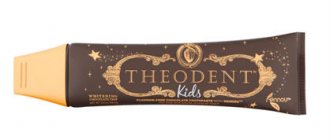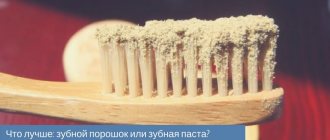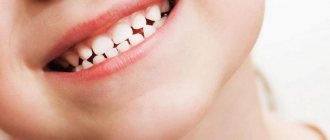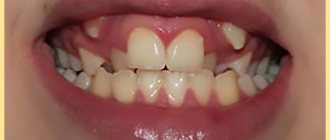» Rituals and rituals » In Rus', a child’s lost tooth was “given” to a mouse, in the West it was given to the Tooth Fairy: what is the meaning of such a ritual
0
28
Article rating
For children, losing their baby teeth is stressful, often accompanied by pain. Parents go to great lengths to make this difficult period easier for their children. And here various rituals come to the rescue, adding a little magic to the life of each child.
Russian rite
In Rus' they took fallen teeth seriously. It was believed that if a piece of a person falls into the hands of an evil sorcerer, then with its help he will be able to steal the soul. For this reason, the tooth was given to little helpers: a mouse or a brownie.
They hid it in a secluded corner, cellar or behind the stove. At the same time, it was necessary to say the magic words: “Mouse, mouse, take the old tooth, and give a new one in return.” Although arbitrary formulations of the conspiracy were also allowed.
They explained to the child that a baby tooth must be given away in order to receive a new and strong one in return. Sometimes the mouse brought a small gift.
“What if the tooth fairy takes me away?”
R
Teeth and tooth loss are a painful part of a child’s life. Before the parents had time to rest from the time when they erupted (the temperature rose, there were pains, hysterics and anxiety), they began to crumble in the literal sense of the word! The first teeth are replaced with molars at the age of 5-7 years. At first they wobble, get in the way, and can even cause nausea and vomiting. But they also need to be pulled out. I can definitely say about my son - fear has big eyes. The child will whine, not eat anything, suffer, but will not allow him to vomit for anything. Maybe call the tooth fairy? So we are afraid of her too!
Son Zhenya has already gone through all the horror stories that you can think of about the terrible tooth fairy! I want to tell you two stories today:
⚜
—————
⚜
We pulled out our first tooth at the age of 5 using a clever method. The tooth “fell out unexpectedly”: I just asked to look. This was the first and last time my son allowed me to see what was wrong with his tooth. In general, before he even had time to utter a word, the tooth was in my hands. The child didn’t even pick up his tooth, looked disgusted and ran away from me: “Fu-fu-fu!”
Then I told him about the miracle sorceress - the tooth fairy, who exchanges teeth for money. Any other child would not let his tooth out of sight in anticipation of a profitable exchange, but not my Zhenya. The interrogations began, why does the fairy need our teeth? Where does she get so much money from? Everything is like that. Dad didn’t think long and told his son that fairies build houses from children’s teeth. Why did such a theory come to my husband’s head then? Unclear. The son believed him, but flatly refused to put the tooth under the pillow. “Why, son?” — I asked, perplexed. “What if the tooth fairy takes all my teeth? She needs a lot of them! How will I eat then?
The whole family was shocked: where did a small child get such thoughts? Attempts to explain that she only needed bad teeth that had already fallen out were in vain. The son kept coming up with new strange facts about fairies. It seems that a fairy is good, magic. Why did Zhenya have disturbing thoughts in her head? Perhaps the fault is in foreign cartoons. Why the son thought so, we never found out. The situation was forgotten for a short time, until the second tooth began to loosen.
⚜ ————— ⚜
The most relevant and useful information for modern parents is in our newsletter. We already have over 30,000 subscribers!
A couple of months after the first story, “trouble” came to my son again. How he disliked those loose teeth! That time he didn’t even tell me about the problem, he was silent until a white piece of the past remained in the food! Oh, how afraid he was then that he had eaten his own tooth. Everything worked out fine, and another incisor was found.
The second attempt to make friends with the tooth fairy was more successful, but not without adventure. The son told us that the tooth fairy could carry him away, since he was small and light: “She needs teeth. What if she steals children and pulls out their teeth for houses? Our dad regretted what he said for a long time... It would be better if tooth fairies turned teeth into candy, money, toys...
The situation was saved by the eldest daughter. She quickly took Zhenya’s tooth under her pillow, declaring that since no one needed the tooth, the fairy would bring her some money. That night, the son seemed to think: “Maybe the fairy isn’t so terrible?!”
The morning was great! Zhenya was the first to jump out of bed and ran to wake up his sister to check the tooth. We actually had a fairy that night. There were as many as 100 rubles under the pillow, all of the daughter’s teeth were in place, and so was she herself. Zhenya checked this carefully. The child was no longer afraid of the fairy, we exhaled...
Zhenya in
shorts and a T-shirt Faster than the wind
My son is still afraid to let his mother pull out a tooth. He does everything secretly. Even if a tooth falls out, he doesn’t tell anyone, he drags it to hide it under the pillow. How do you know when it's time for the tooth fairy to come? Zhenya is cunning, but the fairy is more cunning. No matter how quietly and quietly he does all this, a malicious look, questions and giggles quickly give away his son. The tooth fairy knows when to come. The funny thing is that the child still, having found money under the pillow, runs to us shouting: “Hurray! The tooth fairy only took one tooth!” It seems that he is still afraid that the fairies will not have enough for the house, and they will take all his teeth.
We asked child clinical
psychologist Nelly Rushintseva to comment on the author’s story:
“Changing teeth is an exciting period for a child.
At the age of 5, children have a very developed imagination, so parents should be very careful in coming up with legends about where baby teeth go. The tradition about fairies appropriating teeth belongs more to European culture, but in Russian folklore the tooth was always taken by a mouse. You can, for example, throw a tooth into a crack in a tree with the words: “Mouse-mouse, take the milk tooth, and give me a new one - a strong bone one.” By the way, there are many options for “spells”; this is what children like and gives them the opportunity to feel like wizards and perform a real magical ritual. And the loss of another tooth will pass without damage to the parent’s wallet and psyche.”
How do your children feel about changing teeth and tooth fairies? Read other articles about childhood fantasies and fears
Quick registration Get 5% discount on your first order!
Foreign rite
It is interesting that not only in Rus' it was customary to give a lost tooth to rodents. They are also trusted in France and Spain, only in these countries there are specific characters with names - the Good Little Mouse (La Petite Souris) and Perez, respectively. In Greece, China, Korea and Brazil, it is customary to throw baby teeth onto the roof so that some bird will pick them up.
In the West, the Tooth Fairy manages lost teeth. It is curious that this character was invented by the Spanish writer Luis Coloma, as well as the mouse Perez. The Tooth Fairy gained its greatest fame in 1949, when an American magazine published a whole story about her.
Initially, this publication was conceived by dentists to popularize oral hygiene among children and adults, but the good witch has firmly taken a place in the hearts of parents and children around the world. The image of the Tooth Fairy began to be often used in American comedies and cartoons. Now they believe in her as sacredly as in Santa Claus and the Easter Bunny.
The ritual of handing over a lost tooth to a fairy is very similar to the Russian ritual. In order for her to pick up the tooth, it must be placed under the pillow or on the nightstand. Unlike the mouse, the sorceress brings the child a coin or a small gift. It is believed that such compensation helps the baby recover from the pain and stress associated with tooth loss.
In fact, it is not so important to whom exactly the lost children’s teeth will be given. The main thing is that the kids get over this loss easily and quickly.
Waiting for the Tooth Fairy or When do the first baby teeth fall out?
Many parents are concerned about the question of when should the first baby tooth fall out . Endless questions begin from mothers of the same age, dentists and local pediatricians - when, when?
The issue of changing baby teeth is purely individual. But there is a relationship between the eruption of the first tooth and their subsequent replacement with permanent ones. As a rule, the early appearance of milk teeth foreshadows the corresponding growth of molars. On average, a child will have his or her first permanent incisor in the lower jaw at 5 years of age. Changing teeth is a mechanism for pushing out milk teeth - permanent ones. First, the root of the tooth dissolves, then its upper part begins to wobble and falls out, and a new tooth grows to replace it. The sequence of tooth loss usually coincides with the order of eruption. The change begins with the incisors and so on until the last. The milk bite has 20 teeth. At the age of 12-16 years, all permanent teeth erupt. Sometimes wisdom teeth appear with a delay of several decades, but this is the norm until the age of 30.
So, the long-awaited moment happened, and the first milk tooth left a number of its fellows. What should you do besides calling the Tooth Fairy? After a tooth falls out on its own or is forced to be removed, you should apply a piece of sterile bandage to the resulting hole and bite it for 10-15 minutes. Usually this time is enough to stop minor natural bleeding. When, after 20 minutes, blood still appears, you need to change the bandage and see a pediatric dentist. It may happen that the tooth becomes loose in the late evening. Then it is better to stock up on a pharmacy collection of nettle or sage in advance, make an infusion and cool it. It is dangerous to leave a loose tooth overnight, as involuntary movement of the tongue can cause it to come off, which can cause it to enter the respiratory tract. Therefore, it is important to lose a tooth before going to bed. And if the bleeding does not stop, soak a sterile bandage with herbal infusion and clamp it in the hole. You need to ask the child not to swallow the infusion that has accumulated in the mouth; it is better to spit it out and replace the tampon with a new one. After a day, you can rinse your mouth with soda or a weak saline solution.
Changing baby teeth is always an event not only in the life of a child, but also of the whole family.
Is the child worried?
Many parents worry that when their children lose their baby teeth, they will develop complexes. Actually this is not true. Of course, loose and falling teeth bring physical discomfort to children, however, they do not worry about the unaesthetic appearance. After all, most of their friends also walk around with lost teeth.
When a child's first tooth falls out, the baby may be bothered by the socket that appears as a result of tooth loss. The baby's curiosity inevitably develops, and he constantly tries to touch the socket and the growing molar with his tongue (or even his finger) in order to explore new sensations.
Parents definitely need to explain to their child that this should not be done: your hands can introduce an infection into the mouth, which can cause teeth and gums to become sore.
There is no need to worry if ichor comes out of the hole after a tooth falls out. In this case, you need to let the baby rinse his mouth with a soda solution. If the wound is actively bleeding, you can let the child lightly bite on a cotton pad or gauze pad.
Silver gift ideas for babies on their first tooth
| In addition to the spoon, you can give other original and valuable gifts made of silver. Today, the assortment of jewelry factories includes silver rattles, pendants, commemorative medals for girls and boys, silver bells with colored enamel and an inscription. You can also buy a cup or sippy cup as a gift. Models with bright designs made of colored enamel: hearts, stars, animals are well suited for the first tooth. For Epiphany, it is better to choose a silver cup or sippy cup with Orthodox symbols, for example, with an angel. |
Ready-made silver sets in a gift box look beautiful and expensive. Usually these are sets of two - spoon and fork, spoon and rattle, sippy cup and rattle; or three items - saucer, cup and spoon or fork, spoon, sippy cup. Godparents can buy a set with a silver spoon and a silver-plated icon: with the Mother of God for a girl and with the Savior for a boy. Such a gift will be very valuable for the child and his parents.
What else can you give for the first tooth?
Babies' first tooth appears at the age of 6-9 months. During this period, the child is actively developing and learning about the world around him, so it is better to choose appropriate gifts:
|
Practical everyday things would also be appropriate:
- Bed linen for a baby crib is a beautiful and necessary gift for a baby and his parents.
- Openwork knitted blankets for walks and family photo sessions.
- Elegant and comfortable clothes for holidays and every day.
Which teeth fall out first?
Although the age at which primary teeth are replaced by molars varies and is sometimes difficult, the order in which they fall out is the same for almost all children.
- Sixes begin to grow first. These teeth are not baby teeth, but in all children they are the first to make themselves known.
- Then the lower and then the upper incisors begin to loosen.
- After the incisors, a variety of teeth become loose in different orders and fall out.
- The last ones to loosen and fall out are the fangs.
The process of developing a child’s bite lasts quite a long time – up to 13-14 years. And, by the way, if a child’s baby teeth were uneven, this does not mean at all that the molars will grow the same. It is likely that the teenager will be proud of his Hollywood smile. A permanent bite is formed regardless of the past.











